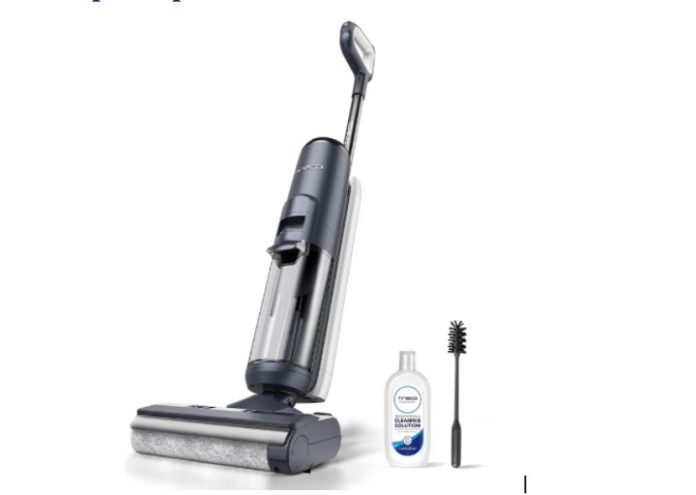Wet-dry vacuums are ideal for tackling messes that traditional vacuums cannot. They’re great for spilled liquids, construction debris, dust, and dirt. Wet and dry materials can be picked up, making cleaning tasks quicker and easier.
However, wet-dry vacuums need proper care to perform at their best. This guide will cover everything you need to know about maintaining your wet dry vacuum. Get ready to clean better!
Benefits of Using a Wet Dry Vacuum
Wet-dry vacuums are very versatile tools for home and workshop use. They can handle even larger messes. Their adaptability makes them indispensable for cleaning. They can handle both wet and dry materials. They can handle everything from small spills in the kitchen to sawdust from home improvement projects.
The suction capabilities of these machines make quick work of stubborn dirt, so you won’t have to spend hours cleaning. Various attachments are also available for wet and dry vacuums. With crevice tools and brush heads, you can customize your cleaning experience.
Different Types of Wet Dry Vacuums
Wet-dry vacuums come in many types, each designed for specific tasks. Understanding these variations can help you choose the right one.
- Portable Wet Dry Vacuums: Lightweight and compact, ideal for small jobs.
- Industrial Wet Dry Vacuums: Construction sites and large cleanups are OK with this heavy-duty unit.
- Carpet Cleaner Wet Dry Vacuums: Models combine wet and dry cleaning features for deep carpet cleaner.
- Wall-Mounted Wet Dry Vacuums: Wall-mounted options that are easy to access without taking up floor space.
- Multi-Surface Models: Units with the ability to switch seamlessly between wet and dry applications.
Each type offers distinct advantages tailored to particular cleaning challenges and environments. Choosing wisely ensures efficient performance every time.
Features to Look for in a Wet Dry Vacuum
Certain features can make a huge difference in your cleaning experience when choosing a wet-dry vacuum.
- Suction Power: High-efficiency motors provide strong suction. Both liquids and solids can be picked up effectively.
- Tank Capacity: Larger tanks require fewer trips to empty. Make sure you know what volumes you will regularly work with.
- Filter Type: HEPA filters are excellent for capturing fine particles and allergens. Make sure cleaning and replacement are easy.
- Portability: You can move around effortlessly with lightweight models and sturdy wheels.
- Accessories and Attachments: Enhance functionality with versatile tools. Surface-specific nozzles and brushes improve efficiency.
These features can elevate your cleaning game, allowing you to tackle messes swiftly and effectively.
How to Properly Use and Maintain Your Wet-Dry Vacuum
Start by reading the user manual carefully. Specific features and requirements may vary by model. Make sure the filter is clean before each use. Clogged filters reduce suction power. Replace or wash it according to manufacturer instructions. When vacuuming liquids, switch to a proper liquid collection mode.
It prevents damage to internal components. Empty the tank after using your vacuum. Mold can grow inside when debris or water is left inside. Keep hoses and attachments clean. Maintaining these parts prolongs their lifespan. Avoid direct sunlight and extreme temperatures when storing your wet-dry vacuum.
Best Practices for Cleaning with a Wet Dry Vacuum
Start by choosing the proper attachment for your wet-dry vacuum. Nozzles are designed for specific tasks, such as picking up debris or handling liquid spills. Always clear the area before cleaning. Remove obstacles to ensure a smooth process. Go slow and steady when vacuuming liquids.
Ensures thorough suction and avoids splashes. Use a sweeping motion to gather solid waste efficiently. Remember to empty the tank after each use. Mold can grow inside if water or debris is left inside. Make sure filters are cleaned regularly. It enhances your machine’s performance and extends its life.
Common Mistakes to Avoid When Using a Wet Dry Vacuum
Cleaning with a wet-dry vacuum can be much easier, but it’s easy to make mistakes. Checking the filter is a common mistake. Dirty or clogged filters reduce suction power. Make sure it’s clean before you start cleaning. Using the wrong attachment is another error.
Surfaces require different tools; a floor nozzle could damage upholstery. When vacuuming liquids, users often need to remember about proper disposal. Leaving the tank unemptied can cause odors or mold growth. Check hoses and connections regularly. Blockages or cracks in these areas can slow performance. Taking care of your equipment ensures its longevity.
Conclusion
Wet-dry vacuums are versatile cleaning tools. They simplify spills and debris removal and improve overall cleaning efficiency. Ensure your vacuum gets the most out of its benefits, types, and features. Proper maintenance will keep your wet-dry vacuum in excellent condition for years.
Avoiding common pitfalls can maximize the effectiveness of this powerful tool. You should invest time in understanding how to use and care for your wet-dry vacuum. With a bit of attention to detail, you’ll find this equipment indispensable for home or workplace cleaning. A clean environment promotes productivity and well-being.

